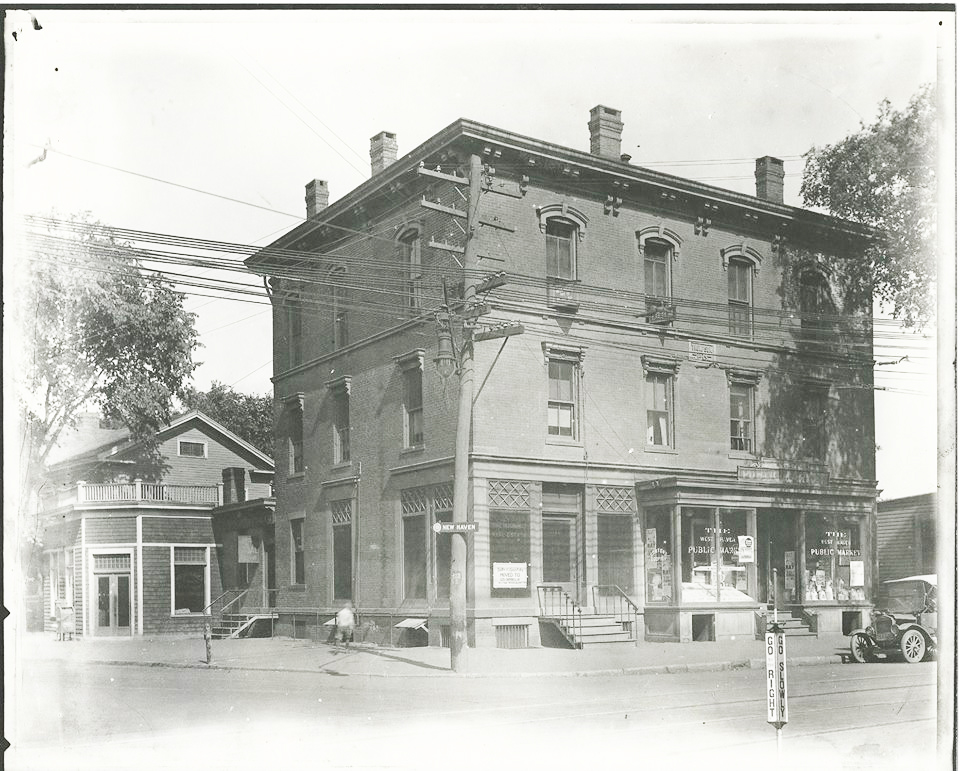By Dan Shine
Voice Columnist
West Haven Green, 1920s
Part VIII – Conclusion
See Part 1, Part 2, Part 3, Part 4, Part 5, Part 6, or Part 7

On the southeast corner of Campbell and Main was the what is today known as the Altschuler Building; built in 1825, it is the oldest “larger” building in West Haven. Over the years, it has housed a courthouse, a jail, a post office, a morgue and a library. During the 1920s, West Haven Bank and Trust was located there; the bank failed during the Great Depression of the 1930s, taking all of Katherine Held’s family’s money with it, for these were the days before the advent of the Federal Deposit Insurance Corporation. That building is reputed to have its own howling ghost, that of murder victim Jennie Cramer, but that’s another story for another day.
For many years, the Atlantic and Pacific Tea Company—better known as the A&P — occupied different locations on the block between Main Street and Curtiss Place. At that time, it was one of the “larger” grocery stores in West Haven.
Also in that block was the Cameo Theater, one of several West Haven movie houses which enjoyed great popularity during the years before the advent of television.
Generally, the other businesses occupying that block included a barber, a meat market, two bakeries, two grocery stores and a hardware store. In those days, you could walk to one of the many stores on Campbell Avenue, and buy every item that you could possibly need!
At the south corner of Curtiss Place stood the telephone company building, on the site where it still stands today, connecting telephone calls for West Haveners.
By the 1920s, Church Street had been cut through to Campbell Avenue, dividing the old Burial Ground, and causing the removal of Christ Church; and also by this time, that church was rebuilt in stone, standing on the south side of Church Street, and to the west of the Burial Ground.
Katherine Held recalls that next door to Christ Church stood the home of Harry Ford and Sarah Welch; later it would become the home of First Church’s Sexton Jimmy Coyne.
To the west of that house stood the home of Reverend Johnson of Christ Church.
In front of those homes, and even until late in the twentieth century, stood small stone obelisks with iron rings affixed to them. These served as hitching posts for those who came into town in buggies and on horseback.
On Savin Avenue, to the north of Church Street stood the home of John Lynch, civil engineer and influential local politician. Next door stood the home of the Wells family, with its wraparound porch that the neighborhood children enjoyed playing on. In the early years of the twentieth century, this property was a dairy farm, which at the urging of the town fathers was later moved to a more rural area in Seymour.
Two houses from the Wells House was the First Church parsonage; at that time it was the home of Reverend Wilbur Johnson. Although Rev. Johnson added 350 new members to the church in one year, and was responsible for assembling the fifth largest Sunday School in the country, he was forced out for “improprieties” and left West Haven in disgrace.
At the corner of Savin Avenue stood the Poli house, as it still stands today. The Poli family at one time owned 30 theaters and various other properties around the United States; Sylvester Poli was at that time the largest theater owner in the world. Today the Poli house is occupied by the West Haven Historical Society.
It is the sincere hope of these writers that these homes and business facilities, which represent such a significant part of West Haven’s history, will be retained and maintained for the benefit of future generations.
Thanks to Steve Hildrich for his help with this part of the story